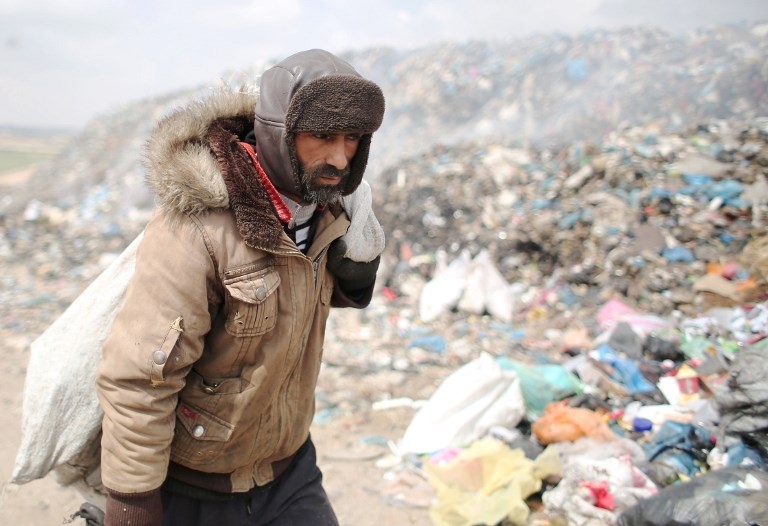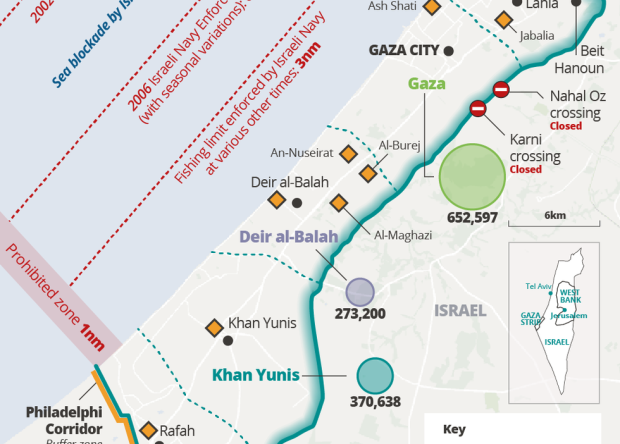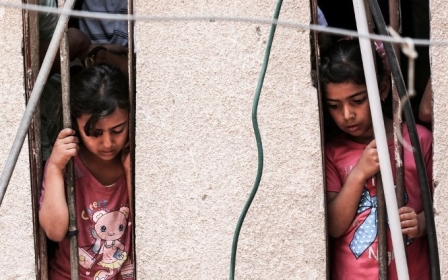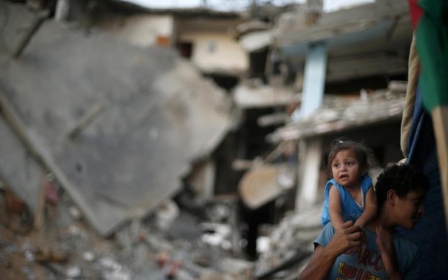'I feel like I live in a septic tank': Gaza's environmental meltdown

On 14 July Israeli jets pounded areas of the Gaza Strip in what was the most serious series of strikes on the besieged territory since 2014.
At least two Palestinians were killed and several others injured. The Israelis say the attack was in response to mortars and other incendiary devices being fired over the border.
An environmental disaster
Gaza is facing not only another round of killings but, with the destruction of more buildings and infrastructure, an environmental disaster is unfolding. With two million people crammed into an area of land only 41km long and 10km wide, Gaza is literally bursting at the seams.
At the height of the protests and shootings on the border of the Gaza Strip earlier this year, when Israeli forces killed more than 100 Palestinian protesters and left thousands of others injured, a senior member of the Israeli army wrote a letter to the head of the World Health Organization (WHO).
Major General Yoav Mordechai, coordinator of the Israeli army's bureaucratic arm (COGAT) wanted to bring WHO’s attention not to the killings but to the question of the mass burning of tyres by Gazan protesters.
The number one environmental issue is water and sanitation. More than 50 per cent of Palestinians in Gaza have no access to running water
"This is a serious environmental issue that will harm the health of the residents and cause unprecedented air pollution," said Mordechai. "I call upon you, as the head of an international organisation whose goal is to promote health and protect natural and environmental resources, to do everything in your power to publicly warn against this ecological catastrophe and to protest Hamas’ irresponsible behaviour."
To some, Mordechai's warnings about the environment might have seemed irrelevant, even callous. After all, when people are being shot and killed, who really cares about fires and air quality? However, Gaza is indeed in environmental meltdown but it’s just not the toxins and black smoke from the burning of thousands of tyres by protesters that is doing the damage.
There are far bigger problems which, if not tackled, threaten to make life in the territory unsustainable in the very near future.
The number one environmental issue is water and sanitation. More than 50 percent of Palestinians in Gaza have no access to running water. The aquifer below Gaza – which also extends into Israel - is severely diminished, mainly due to overexploitation.Less rainfall and changes in climate are also contributing to the aquifer's demise. Water experts say the aquifer receives less than half of the 7.7 billion cubic feet of water needed to recharge itself each year.
A perpetual crisis
In July 2017 the UN published a detailed report on Gaza and its environment. Its conclusions, which described the territory as being in a state of perpetual crisis, were grim.
"On the ground, life for the average Palestinian in Gaza is getting more and more wretched," said the report. "An 11-year-old child has not experienced more than 12 hours of electricity in a single day in his/her lifetime. No one remembers a time in recent memory when drinkable water reliably appeared out of a tap."
Vast amounts of sewage are being discharged into the Mediterranean – the equivalent of 43 Olympic swimming pools full every day
The report projected that water resources in the aquifer will be completely exhausted by the end of 2018. Meanwhile, the water that remains is badly polluted both by salt water which intrudes from the sea and by sewage runoff. Most people have to purchase their water from private tanker operators; this is not only expensive but quality controls on such supplies are often lax.
The Hamas administration, its incompetence and the constant political and financial feuding with the Palestinian Authority (PA), must take some of the blame for the dire living conditions that Palestinians in Gaza have to endure on a daily basis. But Israeli bombing campaigns - plus the continued restrictions on the import of vital equipment and building materials - are doing the most lasting damage.
Death and disease
Water availability, sewage treatment and electricity supply are all interlinked. Power stations and other infrastructure were hit during the 2014 Israeli bombing campaign. As a consequence energy is still in chronically short supply, not just for residents but for power to drive sewage plants and other facilities.
According to the UN, in 2017 blackouts for the majority of householders in the territory were lasting up to 20 hours a day. A lack of power to run Gaza's small number of sewage facilities means that vast amounts of sewage are being discharged into the Mediterranean – the equivalent of 43 Olympic swimming pools full every day.
Beaches are contaminated. The smell of effluent lingers in the air. "I feel like I live in a septic tank," one resident said. Children are warned not to play on the beaches or swim in the sea. Residents are concerned about the contamination of fish caught within the Israeli imposed six-mile fishing limit off Gaza’s coast.The United Nations Relief and Works Agency (UNWRA) says that infant mortality rates in Gaza have not declined in recent years, in contrast to most other areas of the world.
Health experts say water-related diseases are responsible for a large number of the deaths. The environment does not respect borders – or the Israeli blockade. Sewage discharged into the sea is moved northwards by winds and currents.
Children are warned not to play on the beaches or swim in the sea. Residents are concerned about the contamination of fish caught within the Israeli imposed six mile fishing limit off Gaza’s coast
Israeli beaches had to be closed at one stage last year, and an Israeli desalination plant - one of the most advanced in the world - on the coast 30 miles north of Gaza was forced to shut down due to its filters being blocked by algae blooms caused by the increased levels of effluent in the water.
There have been some improvements lately. In recent months Israel has increased water supplies, paid for by the PA, to the territory. Last year a desalination plant in the south of the Gaza Strip became operational, supplying 75,000 people in Khan Younis and Rafah with drinking water.
The 'de-development' of Gaza
The Palestinian Water Authority (PWA) says plans for another, larger desalination plant – also to be located in the south of the Gaza Strip - are entering a new phase, though the PWA says there are problems with funding and doubts about whether the Israelis will allow the import of the necessary materials for the facility.
After more than 10 years of delays caused by war and the blockade, the North Gaza Emergency Sewage Treatment plant, which will cater for the sanitation needs of more than 400,000 people, finally started preliminary operations earlier this year.
The US$75m project, funded by the World Bank, the EU and a number of other donor countries, still faces considerable difficulties, particularly over its power supply. The World Bank says what's needed is a dedicated power line from Israel supplying energy direct to the plant.
To date Israel has committed to some preliminary power arrangements though it's still unclear whether the new plant will have a guaranteed, long-term supply.
The 2017 UN report talked of the economic "de-development" of Gaza and the environmental conditions which would, it said, make the territory unlivable by 2020. It said there must be immediate moves towards peace in order that people could live "dignified, healthy and productive lives."
Sadly, the opposite is happening. As each day passes, the humanitarian and environmental situation in Gaza becomes ever more desperate.
- Kieran Cooke is a former foreign correspondent for the BBC and the Financial Times, and continues to contribute to the BBC as well as international newspapers and radio networks.
The views expressed in this article belong to the author and do not necessarily reflect the editorial policy of Middle East Eye.
Photo: A Palestinian man walks through a pile of rubbish as he searches for recyclable waste and other items in hope to sell them, at a dump in Rafah, in the southern Gaza Strip on 16 April 2015. (AFP)
This article is available in French on Middle East Eye French edition.
Middle East Eye propose une couverture et une analyse indépendantes et incomparables du Moyen-Orient, de l’Afrique du Nord et d’autres régions du monde. Pour en savoir plus sur la reprise de ce contenu et les frais qui s’appliquent, veuillez remplir ce formulaire [en anglais]. Pour en savoir plus sur MEE, cliquez ici [en anglais].








